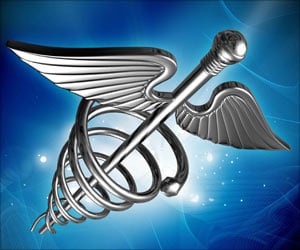When a patient is hypnotized, distinct sections of the brain have altered activity and connectivity. This may allow people to do things they might never do in their normal life.

‘During hypnosis, a region of the brain called the dorsal anterior cingulate cortex, which helps people stay vigilant about their external environment became less active.’





"Now that we know which brain regions are involved, we may be able to use this knowledge to alter someone's capacity to be hypnotized or the effectiveness of hypnosis for problems like pain control," said the study's senior author, David Spiegel, MD, professor and associate chair of psychiatry and behavioral sciences. A Serious Science
For some people, hypnosis is associated with loss of control or stage tricks. But doctors like Spiegel know it to be a serious science, revealing the brain's ability to heal medical and psychiatric conditions.
"Hypnosis is the oldest Western form of psychotherapy, but it's been tarred with the brush of dangling watches and purple capes," said Spiegel, who holds the Jack, Samuel and Lulu Willson Professorship in Medicine. "In fact, it's a very powerful means of changing the way we use our minds to control perception and our bodies."
Despite a growing appreciation of the clinical potential of hypnosis, though, little is known about how it works at a physiological level. While researchers have previously scanned the brains of people undergoing hypnosis, those studies have been designed to pinpoint the effects of hypnosis on pain, vision and other forms of perception, and not the state of hypnosis itself.
Advertisement
Finding the Most Susceptible
Advertisement
Then, they observed the brains of those 57 participants using functional magnetic resonance imaging, which measures brain activity by detecting changes in blood flow. Each person was scanned under four different conditions -- while resting, while recalling a memory and during two different hypnosis sessions.
"It was important to have the people who aren't able to be hypnotized as controls," said Spiegel. "Otherwise, you might see things happening in the brains of those being hypnotized but you wouldn't be sure whether it was associated with hypnosis or not."
Brain Activity and Connectivity
Spiegel and his colleagues discovered three hallmarks of the brain under hypnosis. Each change was seen only in the highly hypnotizable group and only while they were undergoing hypnosis.
First, they saw a decrease in activity in an area called the dorsal anterior cingulate, part of the brain's salience network. "In hypnosis, you're so absorbed that you're not worrying about anything else," Spiegel explained.
Secondly, they saw an increase in connections between two other areas of the brain -- the dorsolateral prefrontal cortex and the insula. He described this as a brain-body connection that helps the brain process and control what's going on in the body.
Finally, Spiegel's team also observed reduced connections between the dorsolateral prefrontal cortex and the default mode network, which includes the medial prefrontal and the posterior cingulate cortex. This decrease in functional connectivity likely represents a disconnect between someone's actions and their awareness of their actions, Spiegel said. "When you're really engaged in something, you don't really think about doing it -- you just do it," he said. During hypnosis, this kind of disassociation between action and reflection allows the person to engage in activities either suggested by a clinician or self-suggested without devoting mental resources to being self-conscious about the activity.
Treating Pain and Anxiety without Pills
In patients who can be easily hypnotized, hypnosis sessions have been shown to be effective in lessening chronic pain, the pain of childbirth and other medical procedures; treating smoking addiction and post-traumatic stress disorder; and easing anxiety or phobias. The new findings about how hypnosis affects the brain might pave the way toward developing treatments for the rest of the population -- those who aren't naturally as susceptible to hypnosis.
"We're certainly interested in the idea that you can change people's ability to be hypnotized by stimulating specific areas of the brain," said Spiegel.
A treatment that combines brain stimulation with hypnosis could improve the known analgesic effects of hypnosis and potentially replace addictive and side-effect-laden painkillers and anti-anxiety drugs, he said. More research, however, is needed before such a therapy could be implemented.
Source-Eurekalert















